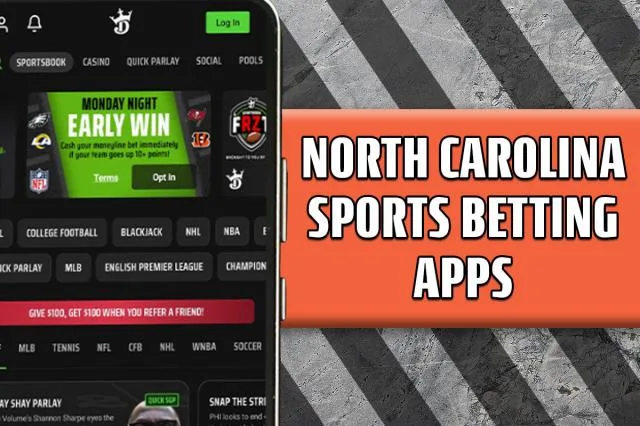The History Of Microsoft Teams
Microsoft Teams passed 300 million monthly users in May 2023 and shows few signs of stopping. This stat, let alone the other mega numbers and stats, makes it a leader among today’s breed of business communications platforms.
Today’s business collaboration apps are the Swiss Army Knives for our desktop workers. Is Microsoft Teams primarily a chat app, or is it a video conferencing app, or is it a file sharing app, or is it 100 other features and integrations?
Yes. It is all these things. This means the history of Microsoft Teams is really the history of several separate Microsoft initiatives and their final melding into one unified product.
While the story takes a few twists and turns, it all comes down to one big decision made by Bill Gates in 2016 (teaser alert).
The early days
The path to the top for Microsoft Teams wasn’t always clear. Microsoft has long been interested in desktop video and chat, with various approaches, and mixed success.
As far back as 2007, Microsoft believed that chat, voice, and video should be combined into one product. 15 years later they have been proven right.
So, what happened in 2007? Microsoft purchased a company called Parlano, which had a team chat app product called MindAlign.
What is really telling is that Microsoft sold MindAlign that same year. They weren’t interested in the app, they wanted to integrate Parlano’s chat technology into their existing Office Communicator software. Even as far back as 2007, they were key to desktop communications being a single app solution.

Microsoft’s strategy with Office Communicator seems almost psychic for its time. The business chat craze was years away as email was still considered the main means of desktop communication.
Slack itself didn’t launch until 2013, but Microsoft was building its first Slack competitor in 2007!
The Lync >> Skype years
Office Communicator was replaced in 2010 by Lync, which proved to be relatively well-liked by customers, analysts, and the press.
Microsoft continued to develop and improve the platform and it provided solid performance by the standards at that time.

While Lync was not the market leader, it performed well enough to firmly establish Microsoft as one of the key players in team collaboration.
Of course, as with all Microsoft products, Lync’s integrations with other Microsoft products, including Windows, gave it an almost unfair advantage. But it must be, said that even without this advantage, Lync was a solid product and a strong contender.
Lync was one of the few desktop apps in its day to support business-quality video. But most customers reported using it just for chat and voice.
I think this reflects that business culture was not ready to support video. People weren’t camera ready.
Lync (and other business video apps) in 2010 were simply ahead of their time. It doesn’t matter how well your app supports video if no one ever turns on their camera.
In 2011, Microsoft purchased Skype, the leading personal desktop video app at the time. This raised many questions among analysts and the press:
- Why is Microsoft buying a video app, when they have Lync?
- How does a personal app tie into Microsoft’s business strategy?
- Is this about the Skype brand or technology? It appears Microsoft needs neither.
One theory is that Microsoft was really purchasing the user base. The simplest way to get 330 million active users is to buy a platform with 330 million active users.
Microsoft then began a process of slow-stepping those users onto their platform, as painlessly as possible to avoid losing them.

This started in 2013 when Microsoft enabled chat and voice between Lync and Skype, blurring the lines between the platforms.
In 2015, Lync was renamed Skype for Business and supported video calls with Skype, blurring the lines even further.
Then, in 2016, the pivotal decision was made that would lead to the current era of Microsoft Teams.
The Slack competition era
In 2013, Slack changed the world.
Millions of desktop workers around the world suddenly realized that email is not such a great tool for internal team communications.
Microsoft doesn’t mind if you use Outlook less frequently. As long as you use another Microsoft tool in its place.
In other words, Redmond (Microsoft HQ) was on a mission. If the world was hooked on using team chat, they were going to get the world to use a Microsoft team chat product.
The strategy to make this happen seemed obvious. When Microsoft wanted Skype’s customers, what did they do?
Now Microsoft wanted Slack’s customers (and potential future customers).
Microsoft’s EVP of Application and Services, Qi Lu, started an effort in 2016 to have Microsoft buy Slack for $8 billion.
Bill Gates was against this.
This was the big decision that led to the creation of Microsoft Teams
Bill Gates thought it made more sense to develop the team chat capabilities of Skype for Business to be more competitive with Slack, rather than to purchase and integrate yet another product.
This was a bold decision by Gates. If you buy Slack, you are guaranteed to get all their customers. It’s an easy win. If you compete with Slack, you risk losing big.
So, in 2016, rather than announcing a bid to buy Slack, Microsoft announced that it would be releasing Microsoft Teams as a direct competitor to Slack.
This was a huge deal. Slack was dominating the collaboration market that it had single-handedly created, and Microsoft was the first serious threat.
Slack was so rattled by the announcement that they put out a full-page ad in the New York Times, welcoming Microsoft to the space.

The intent was to show that they weren’t worried, but Microsoft showed no fear either.
While many business communication apps today offer some sort of persistent team chat, most are extremely basic. Slack was (and still is) loved for its countless advanced features and integrations, and Microsoft was looking to compete on that level.
As a result, Microsoft Teams soon became robust with features. In addition, it boasted of key integrations with Microsoft Office that can be massive productivity boosters, and unmatched by any competitor.
For example, the integration of Microsoft Teams with Office 365 is so powerful that it must be mentioned. It gives users the ability to access and collaborate on Word documents, Excel spreadsheets, PowerPoint presentations, and loads more, directly within the Teams interface.
In 2018, further integration happened when Mio enabled message interoperability for Teams users to send messages to people on Slack or Webex. Zoom Team Chat was added to Mio’s offerings in 2021, with Google Chat interoperability joining the family in 2023.
Microsoft Teams users can now send cross-platform messages without the need for a new interface or the constant switching between apps.
See how you can send messages between Microsoft Teams and Google Chat in the video below.
In 2019, the Microsoft Teams user base surpassed that of Slack. Despite all of Microsoft’s advantages, this was still an impressive accomplishment.

Slack had viral popularity and an adoring customer base. For Microsoft Teams to catch up and pass them in just a few years was remarkable.
Then the pandemic hit and changed everything. Slack’s user base stayed stable throughout the pandemic, while Microsoft Teams grew tenfold.
Microsoft Teams had won the team chat war and was now gearing up to fight a new war with Zoom over video.
The pandemic and post-pandemic era
The COVID-19 pandemic brought about a sudden and dramatic shift towards remote work.
Every meeting was on video.
While Zoom’s astronomic growth during this time is known by everyone, the fact is that Microsoft Teams saw similar growth from tens of millions to hundreds of millions of active users. Much of this is due to the strength of its video conferencing.
Many team chat platforms throw in video as an afterthought. They feel that most communication happens in chat, and video is only useful for quick escalations. This leads to poor-quality video and unhappy customers.
Zoom proved that people appreciate a high-quality, user-friendly, video experience.
Microsoft did not want Microsoft Teams users to shift over to Zoom for video calls. They made a point of putting significant development into Microsoft Teams video to make it competitive with Zoom, just as they made Microsoft Teams chat competitive with Slack.
Teams offers background blurring, room support, webinars, transcription, whiteboarding, AI meeting summaries, and countless other options in its mission to be as full-featured as Zoom and other leading video providers.
Right now, the battle is heated. Zoom has a great product and an adoring customer base. Microsoft Teams has a competitive video product, fantastic team chat, and all-important Office 365 integrations.
Though we now see Zoom integrating into almost everything Microsoft too. A surefire signal that both parties recognize the importance of each other.
Fortunately for both companies, the “new normal” means flex workers will be on multiple video calls every day. So, there are enough potential customers out there for both Zoom and Microsoft to continue growing for the foreseeable future.
Concluding the history of Microsoft Teams
The history of Microsoft Teams is a tale of innovation, strategic decisions, and fierce competition.
The approach of creating one unified solution, rather than a hodgepodge of acquisitions, turned out to be a winning strategy. The boldness of Bill Gates to take a gamble, rather than a guaranteed win, resulted in a better product for the customers.
The battle for desktop workers’ eyes isn’t over. But with its rich feature set, quality team chat, and deep Office 365 integrations, Microsoft Teams is in a great position to dominate the business communications space.



